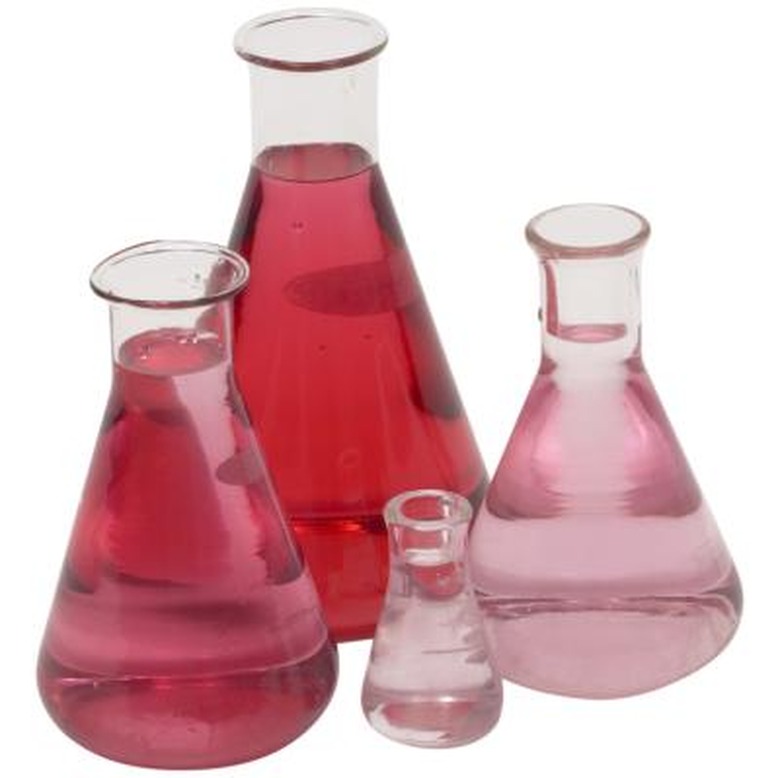How To Convert UG/mL To PPM
Concentrations may be noted in equations as ug/mL, or micrograms per milliliter. One gram equals 1 million micrograms. Concentration also may be listed as parts per million. It is used to conveniently express very small concentrations of a compounds, such as contaminates in water. When converting concentration, take into account the density of water depends upon temperature.
Step 1
Find out the density of the water at the given temperature (see Resources). For instance, at 20 degrees Celsius, density is 998.2 kg/m^3.
Step 2
Divide the water density by 1,000 to convert it from kg/m^3 to g/mL, In the example, 998.2 / 1,000 = 0.9982 g/mL.
Step 3
Multiply the density by 1 mL to calculate the weight of water. Continuing the example, weight is 0.9982 x 1 = 0.9982 g.
Step 4
If using microgram units, divide the concentration by 1,000,000 to convert it to grams. For example, if the concentration is 16 ug/mL, then 16 /1,000,000 = 0.000016 g/mL.
Step 5
Substitute the mL units by the weight of water calculated in step 3. In this example, 0.000016 g/ 1 ml = 0.000016 g/ 0.9982 g = 0.000016 / 0.9982.
Step 6
Divide the numerator of the fraction by its denominator to present the number as a new fraction with the denominator 1. In this example, 0.000016 / 0.9982 = 0.00001603 / 1.
Step 7
Multiply both the numerator and denominator of the new fraction by 1,000,000 to calculate parts per million. In the example, (0.00001603 / 1 ) x 1,000,000 = (0.00001603 x 1,000,000 ) / (1 x 1,000,000 ) = 16.03 / 1,000,000 = 16.03 ppm since the denominator of the fraction is 1 million.
References
Cite This Article
MLA
Fox, Oxana. "How To Convert UG/mL To PPM" sciencing.com, https://www.sciencing.com/convert-ugml-ppm-8498737/. 24 April 2017.
APA
Fox, Oxana. (2017, April 24). How To Convert UG/mL To PPM. sciencing.com. Retrieved from https://www.sciencing.com/convert-ugml-ppm-8498737/
Chicago
Fox, Oxana. How To Convert UG/mL To PPM last modified March 24, 2022. https://www.sciencing.com/convert-ugml-ppm-8498737/
